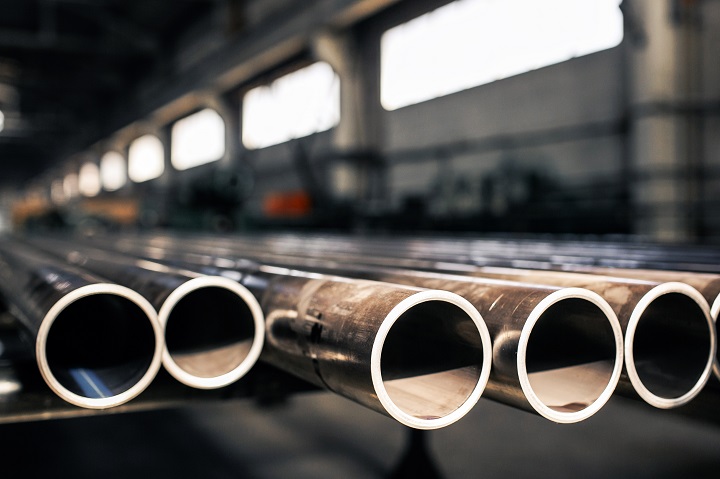
“Success in HDD projects relies on the combination of innovative techniques and reliable materials.”
Regarding water infrastructure, Horizontal Directional Drilling (HDD) has become a game-changer, offering a trenchless method that minimizes disruption and maximizes efficiency.
In this dynamic field, choosing the right materials is paramount and ductile iron pipe has emerged as the go-to choice for its exceptional strength, durability and corrosion resistance. As a boring pipes supplier, selecting ductile iron pipes for HDD projects ensures long-term performance and reliability. In this article, we will delve into the application of HDD in water infrastructure, explore the benefits of ductile iron pipe and provide valuable tips for successful implementation, enabling professionals to leave their mark in uncharted territories of underground installations.
Harnessing HDD for Efficient Water Infrastructure Development
HDD is a trenchless technology that allows for the installation of pipelines without the need for extensive excavation. This method is advantageous when crossing sensitive or challenging areas such as rivers, highways or urban environments. By utilizing specialized drilling equipment, HDD enables the installation of underground pipelines with minimal disruption to the surrounding environment and existing infrastructure.
The Power of Ductile Iron Pipe: Advantages for HDD Projects
Ductile iron pipe offers numerous advantages, making it an ideal choice for HDD projects. Its inherent strength and durability enable it to withstand the demanding conditions encountered during installation and throughout its service life. This remarkable resilience ensures that the pipe can withstand the stresses associated with directional drilling, including bending, pulling forces and ground movement.
Furthermore, ductile iron pipe exhibits excellent corrosion resistance, ensuring long-term reliability and minimizing costly maintenance. That is important for water infrastructure projects as the pipe remains constantly exposed to potentially corrosive elements. The protective cement lining and external coatings of ductile iron pipes provide an additional layer of defense against corrosion, enhancing the pipe’s lifespan and minimizing the risk of leaks.
Proven Tips for Success with Ductile Iron Pipe in HDD
Successful implementation of HDD with ductile iron pipe requires careful planning and consideration of various factors. Let’s explore the key steps involved in the process:
- Pre-Construction and Planning: Thoroughly assess the project requirements, including environmental considerations, route feasibility and regulatory compliance. Engage with a reliable boring pipes supplier to ensure a seamless supply of ductile iron pipes.
- Navigating Preliminary Studies: Conduct comprehensive geotechnical investigations to evaluate soil conditions and determine the suitability of the drill path. This data will inform the selection of appropriate drilling techniques and pipe specifications.
- Seamless Permits and Rights-of-Way: Obtain all necessary permits and rights-of-way to proceed with the HDD project. Compliance with local regulations is essential to ensure a smooth and legally sound installation.
- Effective Public Relations Strategies: Communicate with stakeholders, including local communities and relevant authorities, to address concerns and provide project updates. Open and transparent communication is key to maintaining positive relationships and minimizing disruptions.
STEP 1: Paving the Way: Initiating the Pilot Hole with Precision
The initial step of HDD involves using a pilot bit to create a borehole along the desired alignment. The pilot bit is typically smaller in diameter than the final pipe, allowing for precise control and guidance during the drilling process. Specialized drilling rigs equipped with tracking and steering systems ensure accurate placement of the pilot hole.
STEP 2: Pre-reaming: Enlarging the Pathway for HDD Excellence
After completing the pilot hole, the next step is pre-reaming. That involves enlarging the borehole to a diameter suitable for installing the ductile iron pipe. Pre-reaming facilitates the removal of obstructions and creates ample space for smoothly pulling the pipe into place.
STEP 3: Path to Perfection: Establishing the Optimal Drill Diameter
Determining the appropriate drill path diameter requires careful consideration. Factors such as soil conditions, pipe size and installation requirements significantly influence this decision. Consulting with experienced engineers and contractors, including a knowledgeable boring pipes supplier, can help ensure the optimal drill path diameter is selected.
STEP 4: Seamless Integration According to Boring Pipe Supplier: Installing Ductile Iron Pipe in HDD
After preparing the borehole, the drilling rig combines pulling forces to install the ductile iron pipe into place. The size and capabilities of the rig, as well as the quality and reliability of the boring pipes supplier, are critical considerations to ensure a successful installation. Working closely with a trusted boring pipes supplier who can guide you in selecting the appropriate pipe dimensions and strength is important.
Overcoming Challenges: Navigating Bentonite Clay in HDD
In some cases, drilling through challenging soil conditions, such as bentonite clay, can pose additional challenges. Bentonite clay has a high swelling potential and can cause excessive friction during drilling. Proper drilling fluid management, including additives and regular monitoring, is essential to prevent sticking and maintain drilling efficiency.
Efficiency is Key: Time-Saving Installation Considerations
To optimize installation efficiency, contractors often employ two common methods: the cartridge method and the assembled line method. The cartridge method pulls preassembled sections of ductile iron pipe into the borehole. Alternatively, the assembled line method involves joining individual pipe segments in the borehole. The choice between these methods depends on project requirements, logistical considerations and available resources.
Shielding for the Future: Ensuring Corrosion Protection
After installation, ensuring effective corrosion protection is vital for the long-term performance of the ductile iron pipe. Various corrosion protection measures, such as sacrificial anodes or impressed current systems, can safeguard the pipe against corrosion in different soil and water conditions. Consultation with corrosion specialists and adherence to industry standards is crucial in selecting and implementing the most appropriate corrosion protection measures.
Revolutionize Your HDD Projects with International Pipe: The Ultimate Solution for Water Infrastructure
Ready to take your HDD projects to the next level? Trust International Pipe is the industry leader in delivering top-quality ductile iron pipe solutions. Say goodbye to installation headaches and hello to seamless performance. Partner with us today and experience our products’ strength, durability and corrosion resistance. Boost efficiency, minimize downtime and ensure long-lasting success for your water infrastructure ventures.
